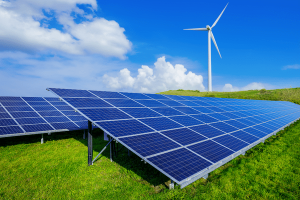Top Four Revolutionary Green Technology Trends Startups Must Adopt in 2022
Tuesday, 20/09/2022 09:00 (GTM +7)
Telenor’s Tech Trends Report highlights the potential of technology as a catalyst for promoting sustainability. With the world gradually overcoming the Covid-19 pandemic, climate change and environmental degradation have emerged as challenges humanity must confront.
To facilitate the transition towards a greener future, businesses can leverage several technology trends predicted to be highly effective support tools.
Green Cloud Computing
The exponential growth of global data traffic, driven by sharing content, images, videos, and messages on smart devices, has significantly increased energy consumption by large storage centres. These centres account for 1% of the world’s total energy consumption.
 Large storage centres account for 1% of the world’s total energy consumption due to the growth of global data traffic.
Large storage centres account for 1% of the world’s total energy consumption due to the growth of global data traffic.
However, high-speed 5G connectivity has paved the way for localized data centres. This development has enabled more efficient energy consumption in data and distribution systems worldwide, as a portion of the traffic is now moved locally.
Furthermore, localized data systems can be established in various locations, such as manufacturing factories, shopping malls, and buildings. By incorporating renewable energy batteries, excess heat generated by these systems can be repurposed, further enhancing their sustainability.
Green E-learning
In 2022, many businesses will incorporate green courses and degrees into their internal HR training programs. This trend reflects a growing eagerness among employees to learn how to leverage digital technology and innovation to support environmentally friendly projects within their organizations.
 Businesses will offer green courses in HR training to support eco-friendly projects driven by employees’ desire to use digital technology for sustainability.
Businesses will offer green courses in HR training to support eco-friendly projects driven by employees’ desire to use digital technology for sustainability.
The global economy is expected to shift towards sustainability, creating more jobs in green technology and improved processes across all industries to reduce CO2 emissions and environmental impact.
To meet this demand, businesses must prioritize online learning and green literacy to remain competitive in attracting new talent. Failure to do so risks making them less attractive to prospective employees.
Green Energy
Notably, the number of devices that consume electricity and emit carbon dioxide, such as computers, phones, and appliances, now exceeds the human population by four. As we move forward, this gap is expected to widen further. Given the time required to transition to alternative energy sources, individuals must optimize their use of these devices to minimize their environmental impact.
 Optimizing carbon-emitting devices is crucial to minimize environmental impact when transitioning to alternative energy sources.
Optimizing carbon-emitting devices is crucial to minimize environmental impact when transitioning to alternative energy sources.
There is intense competition between companies to develop and refine energy-saving features, with many businesses investing significant sums of money to acquire the knowledge and assets needed to gain an edge in this race for optimization.
Greenfluencers
As the trend towards green living continues to gain momentum, particularly among young people, social networks are expected to play an increasingly important role in spreading awareness about environmental protection. Influencers and ecological experts have become ubiquitous across various media platforms, and their messages resonate with fans and the public.
 Social media is key in promoting environmental protection through influencers and ecological experts, especially among young people.
Social media is key in promoting environmental protection through influencers and ecological experts, especially among young people.
As a result, we can expect to see a shift in communication trends among brands, emphasising a commitment to environmental protection and sustainability. Companies that fail to adapt to this changing landscape risk being left behind by consumers increasingly conscious of their choices’ ecological impact.
Contact:
itifund.com
(+84)90 998 3699
info@itifund.com
fb.me/ITIFund









